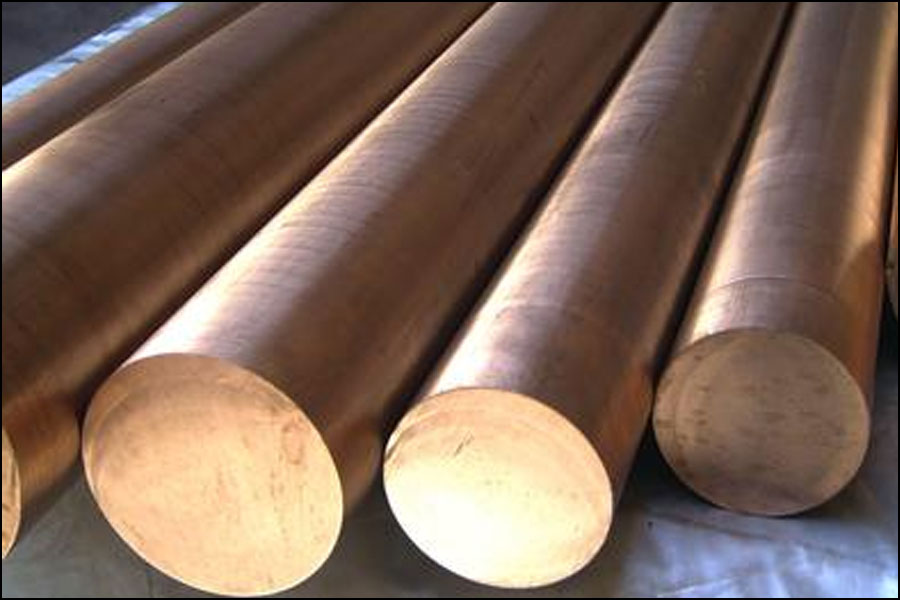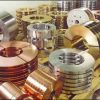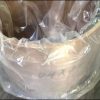
Industrial pure beryllium is used to produce beryllium materials and beryllium alloy materials through powder metallurgy and plasticity cnc machining. The production of metal beryllium and beryllium-containing alloys began in the 1920s. During the Second World War, the beryllium industry was greatly developed due to the need to make nuclear reactors. Since the mid-1960s, beryllium has been used in the aerospace industry. The research of beryllium materials mainly solved the problems of beryllium casting and extrusion process in the 1940s; in 1947, a process based on powder metallurgy was formed; in the early 1970s, the mechanism of microalloying was mastered, and impact grinding and electrolysis were applied. Refining, hot isostatic pressing and powder pretreatment process, so that the mechanical properties of beryllium materials have been significantly improved (elongation increased from 1% to 3-4%). The development of beryllium materials in China began in 1958. In the 1970s, beryllium components and various beryllium materials for high-throughput experimental reactors were successfully developed.
Beryllium has a large neutron scattering cross-section and a small absorption cross-section. It is suitable for use as a reflector and moderator for nuclear reactors and nuclear weapons. It is the main material of choice for the reflector of test reactors, aerospace, submarine and other power reactors. Beryllium can also be used as a neutron source and in the manufacture of nuclear targets, X-ray tubes and scintillation counter probes in nuclear physics and nuclear medicine research. Beryllium single crystal can be used as a neutron monochromator. Because the ratio of elastic modulus to density (specific stiffness) of metal beryllium is the highest among metals (Table 1), and its specific strength and micro-yield strength are also high, it can be used to make various aircraft parts. Another important use of beryllium is the manufacture of various advanced instrument components, the most representative of which is the beryllium gyroscope used in inertial navigation systems. Beryllium is highly toxic, low in plasticity, and difficult to process, which limits its application. Beryllium can be used as an alloying element. Beryllium copper containing 0.4 to 2.7% of beryllium is the most typical example of age-hardening alloys. The consumption of beryllium copper is about 70% of the total consumption of beryllium.
The conventional pure beryllium material is actually an alloy material containing dispersed beryllium oxide particles. The content of beryllium oxide in beryllium materials prepared by powder metallurgy is generally 1.2-3.0%. The content and grain size of beryllium oxide have obvious effects on the mechanical properties of the material, especially the elongation. Grain refinement can increase tensile strength and elongation, and increase in beryllium oxide content can increase strength and decrease plasticity. Among beryllium-based alloys, the research on beryllium aluminum alloys is more in-depth. Beryllium and aluminum are not solid-solved in each other. Adding an appropriate amount of aluminum to beryllium can maintain a higher elastic modulus and lower density, and can improve plasticity and facilitate plasticity machiningand cutting. The aluminum content in beryllium aluminum alloy can reach 25-43%. The well-known “Rock Alloy” is a beryllium aluminum alloy with 38% aluminum, which can be processed into extruded materials and hot-pressed plates, and has been used in rocket reinforcement structures and aircraft biplane materials.
The beryllium ingots prepared from beryllium materials have coarse grains and poor mechanical properties (tensile strength of 2-15 kgf/mm, elongation close to zero), except for the application of ingots and processed products where high purity is required , Beryllium materials are mostly prepared by powder metallurgy. Most of the industrial beryllium uses beryllium beads produced by magnesium reduction as raw materials, and products with different properties are obtained by controlling the impurity content, grain size, heat treatment and molding process. The properties of different grades of beryllium materials are shown in Table 2. After 1970, high-purity scaly beryllium produced by electrolysis was used to make high-strength, high-plastic structural materials.
Powder metallurgy Beryllium beads need to be purified by vacuum induction melting and cast into billets for powder milling. The billet is milled into beryllium chips, and then ground into beryllium powder under the protection of inert gas. The cold-flow impingement powdering method adopted after 1967 can improve the quality of beryllium powder and is an important development of the powdering process. The beryllium powder produced by this method has low oxygen content and the particles are equiaxed.
The methods of consolidation and forming of beryllium powder mainly include:
- ①Vacuum hot pressing method is the main method for producing beryllium parts, extruded blanks and cross-rolled slabs. Graphite molds are commonly used, the vacuum degree is 0.5 Torr, the temperature is 1000~1100℃, and the pressure is within 200 kgf/cm. The diameter of industrially produced hot-pressed ingots can reach 1,800 mm and the weight can reach about 5 tons.
- ②Hot isostatic pressing method, first applied to beryllium powder forming, is an effective method to consolidate high-purity beryllium powder to achieve close to the theoretical density. The beryllium material produced by this process has high strength, good plasticity and isotropy. This process can directly produce blanks close to the final size of the product, thereby reducing costs. Some materials made of high-purity beryllium powder as a raw material are heated to 1260°C by hot isostatic pressing, but the crystal grains still do not grow significantly. The commonly used hot isostatic pressing process parameters are: temperature 1060~1095℃, pressure 1000 kgf/cm.
- ③ Cold isostatic pressing-vacuum sintering method, cold isostatic pressing is a common method for preforming beryllium powder. The blank formed under a pressure higher than 3100 kgf/cm can withstand intermediate cutting processing. The blank after cold isostatic pressing and cutting is vacuum sintered. The billet sintered at 1200~1245℃ has a relative density of 97~99%, and its strength is close to standard hot-pressed beryllium. This method can produce products with more complex shapes and good isotropy.
- ④The cold isostatic pressing-hot isostatic pressing method, the degassing of the cold isostatic pressing blank and the quality of the envelope sealing and welding have a great influence on the effect of the hot isostatic pressing process. It has been possible to press cones with a wall thickness of less than 2.5 mm and products with a diameter of 410×1020 mm.
- ⑤The cold isostatic pressing-vacuum hot pressing method is suitable for producing products with large aspect ratio and uncomplicated shape, and also suitable for the consolidation and forming of fine beryllium powder with high oxygen content.
Plasticity beryllium machining is brittle, and plasticity machining methods can still be used to process the blanks made by powder metallurgy into bars, tubes, foils, wires, forgings and various profiles. Beryllium has two plasticity peak zones at about 400°C and 800°C, which are defined as warm working zone and hot working zone respectively. Large deformation operations should be carried out in the hot machining zone to reduce deformation resistance. In order to prevent the oxidation of the beryllium material, improve the stress distribution of the processed parts and protect the environment, the beryllium blank should be sealed and welded in the mild steel sheath during hot machining. Beryllium plate is the main form of beryllium material, which can be prepared in various specifications ranging from 0.025×51×51 mm to 0.5×1220×4572 mm. The cross rolling process can ensure the stability of product performance. The sheathing blank is hot rolled at 780~800℃; plates with a thickness of less than 1mm are usually warm rolled at 330~540℃, and then cold rolled. Foil with a thickness of less than 7.5 microns is generally prepared by a vacuum steaming process. The hot extrusion temperature of beryllium is 885~1060℃. According to the performance requirements of the material, the extrusion ratio can be selected from 12:1 to 40:1. The actual diameter of beryllium extruded material can reach 127 mm. Forging machining can significantly improve the strength, plasticity and fatigue life of beryllium materials. The strength and elongation of the instrument-grade beryllium material after forging are increased from 40 kgf/mm and 1% to 70 kgf/mm and 15% respectively. Ring rolling between rolling and forging is a method of making seamless thin-walled cylinders or rings. The drawing process of beryllium wire has also been mature, and various beryllium wires with a diameter of 0.025 mm or more can be prepared.
Cutting process Beryllium is sensitive to notches, and various beryllium structural parts (including mechanical properties samples) need to be chemically milled after cutting to remove the damage layer about 0.1 mm thick. For precision parts that require dimensional stability, such as beryllium gyroscopes and beryllium environments, stress-relieving annealing and thermal cycling treatments are required to stabilize the structure. Conventional metal cutting methods can be used for beryllium, and EDM, electrochemical milling and chemical milling can also be used.
Connection fusion welding is not suitable for powder metallurgy beryllium parts. The ingot rolled plate can be welded by electron beam. The beryllium assemblies with complex shapes can be brazed, bonded and mechanically connected. Diffusion bonding and resistance welding are rarely used for beryllium materials.






